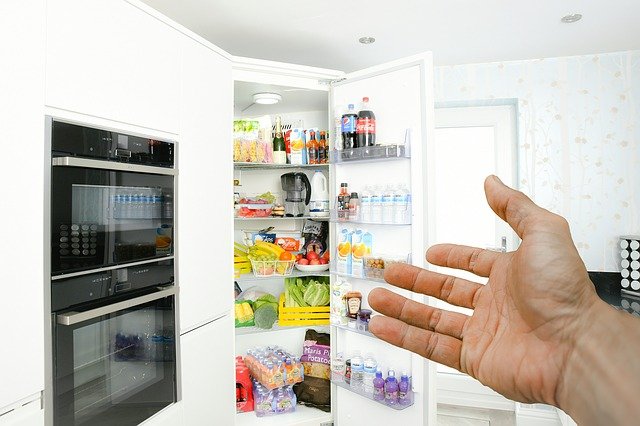
Have you ever wondered how the technology that keeps ice frozen was invented? Yes, we’re talking about a refrigerator that has served as a chilly room for food, beverages, and even ice as previously stated.
A refrigerator is now almost every individual’s best friend, regardless of the weather conditions because everyone needs it for something.
Now that we’ve covered how it works, let’s now take a look at the history of this refrigerator.
The history of the refrigerator
The first person to create a refrigerator in the mid-18th century was Scottish chemist William Cullen. After he figured out how quickly liquid is heated, he developed the artificial refrigerator that produced gas when liquids are cooled too rapidly.
This test produced a little amount of ice, however, it had no practical use until many inventors and scientists worked on developing the technology.
The next step in the technology of the refrigerator was when American engineer Jacob Perkins invented a working version known as the ice-making machine.
This machine had the same effect as Cullen’s test, but it produced small amounts of ice to be used for medical purposes. However, this machine did not create enough ice nor did it have any practical use.
Many of these geniuses developed remarkable devices that had never been seen or heard before, which is why they led to the final product that we have today and even in today’s time, firms are focused on bringing forward and more developed and re-imagined products to the market as the world moves forward with technology.
Let’s look at how much the refrigerator has evolved over time.
The development of refrigerators
The first refrigerator, as previously stated, did not function to cool or freeze water. As a result, it was designed by many people over time in order to fulfill its initial purpose of refrigerating and freezing water.
Every individual who brought forward a different variation of the refrigerator helped others understand what modifications they could make to ensure that it would be utilized for its purpose.
Ice houses and boxes were used in the past to keep the ice in its form and stop it from melting, however many inventors recognized that they simply aided in preventing the melting of ice rather than encouraging it to occur.
There were a variety of methods people used to freeze water for ice prior to modern technology, including converting water into a solid state using chemicals.
Many people began to take the idea of artificial ice seriously as it became a trend, and once more inventors recognized that they could artificially create ice from water through freezing.
That being said, a number of cities in cold climates started building large buildings to keep the ice frozen longer so that it would be kept at a cold temperature for a longer period of time.
The refrigerator’s ability to keep cool was achieved in a variety of ways. Many inventors, scientists, and physicians used this method to construct refrigerators at first, but it had several drawbacks.
Many of them were commercial failures that resulted in other people using a slightly different technique and making modifications to ensure that previous blunders were not repeated and that every single aspect of the refrigerator was working precisely.
Many inventors experimented with refrigerators in various ways. One of the most popular methods was to utilize the gas absorption technique, which utilized gas to create a cooling environment within this technology, ensuring that water became ice and remained that way until removed for use.
This was first performed by French citizen Ferdinand Carré, after whom many other innovators, including American engineer Jacob Perkins, developed a similar machine.
Afterward, Scottish inventor James Harrison began working on refrigerators that would become popular for the ice industry and eventually work on platforms like trains.
Meanwhile, American inventor Alexander C. Twinning continued his research into this technology in order to refine it further and ensure that every aspect of the refrigerator was used in the most effective way possible.
The different types of refrigerators

When the first refrigerators were produced, they were primarily utilized in commercial settings since there was often leakage that made them hazardous and unsuitable for residential use.
Many refrigerator failures occurred as a result of numerous flaws, and it took decades for refrigerators to be developed that was safe to store at home.
The earliest commercial refrigerators resembled tiny cupboards kept in a corner and utilized by butchers and places that served cold beverages.
Commercially, iceboxes were used to keep things cool and ensure they didn’t go bad, however, this was a major inconvenience since there wasn’t enough space in the icebox to store everything before it ran out of room, and also because of the excess ice that had to be purchased.
In 1826, a British man named John Phin created an early form of the refrigerator by utilizing alcohol, ammonia, and sulfuric acid as cooling agents in order to create a machine that could change water into its liquid state and remain frozen.
This was only used for commercial purposes since it was dangerous to use in homes, and it wasn’t until 1834 that American-born physician John Gorrie began utilizing the concept of artificial refrigeration in order to cool down his yellow fever patients.
It did not take long for refrigerators to become a standard asset for companies needing a cooling system, but they were not safe to keep in houses.
It was not until 40 years later that residential refrigerators became available. Residential refrigerators, at first, were quite expensive owing to obvious reasons, making them uncommon sights in residences.
The demand for refrigerators began to increase as the years went by, and more and more people started purchasing them.
However, as time progressed and refrigerators improved, they became increasingly popular in homes and prices decreased dramatically until today, we seldom encounter a dwelling that does not contain a refrigerator, even the cheapest or second-hand models.
Countries that introduced them at the beginning
France, Germany, Scotland, and other countries used refrigerators from the early days. Many of the early inventors were from these nations, so they were among the first to use them.
Because they didn’t accomplish much at first, the refrigerators were rarely utilized and only by a few people from a restricted number of nations.
Some countries began importing refrigerators for commercial usage as time went on, however, this was an uncommon occurrence due to their high costs and then the cost of import, which is why it was an unusual sight.
As they became more prevalent in commercial applications, businesses of all sizes started using them to store their products in a cool place.
On the other hand, commercial refrigerators became widespread throughout many nations since 1995.
Several countries where residential usage began in 1995 include Spain, Slovenia, Ukraine, Australia, Slovakia, Indonesia, and Finland.
During the initial years, refrigerators had problems that included materials used in their production that harmed the ozone layer. As a result, several countries imposed bans on the manufacture and import of these units.
The big effect of the refrigerator on lifestyles

Refrigerators were not commonly used in homes until after 1995 when they became more accessible; prior to this, they were seen as a luxury item only available to the wealthy.
However, because more companies and nations began importing them from other countries or even constructing them themselves, they have grown increasingly popular.
People began buying and utilizing them in their houses due to their ability to keep food fresh and cool for a longer period of time than other methods such as the icebox.
Not only were they utilized in residences, but they also became popular in many commercial applications. This led to reduced costs and increased usage worldwide over the years until today, where we encounter them almost everywhere we go: at homes, schools, hospitals, workplaces, shops and much more.
Refrigerators are an essential part of today’s life, and they’re especially useful during the winter when we keep water, cold beverages, meals, and other items within them.
Refrigerators are becoming more modern and even elegant as technology advances. It is also predicted that in the near future, refrigerators will be able to take orders like a vending machine.
- See also: when thanksgiving was first celebrated
- See also: how is the history of coffee machine technology invented
Some issues with the refrigerators
At first, there was a problem when people discarded refrigerators that were no longer repairable. The ozone layer was being harmed, causing significant changes in the world’s climate.
This generated a lot of concern among people. In today’s times, modern refrigerators are now constructed utilizing HFC-134a, which is non-harmful to the ozone layer.
The refrigerators are also capable of prolonging the life of fruits and vegetables by up to 3 times compared to other traditional preservation methods such as the icebox, which means they’re also economical for consumers.
They can even keep items cool during power outages, making them more common than the icebox, especially in places where the temperature is high.
In the future, it’s expected that refrigerators will be able to keep items chilled or frozen for a longer period of time without requiring constant power usage, making them more efficient and economical in the long run. They’re also going to have many more modern advanced features such as being able to take orders from customers just like a vending machine.
Summary
Refrigerators, without a doubt, are fantastic inventions that have changed our lives for the better. They may be found in every household and aren’t just used for business.
The history and development of refrigerators illustrate how far we’ve come as well as how much better a product we have today.
Some businesses and nations still rely on refrigerants that contribute to global warming since they deplete the ozone layer, which is causing an increasing effect.
Brands and countries must take responsibility for developing environment-friendly refrigerators so that future generations are not saddled with the consequences of a hotter and hotter planet over time.



